
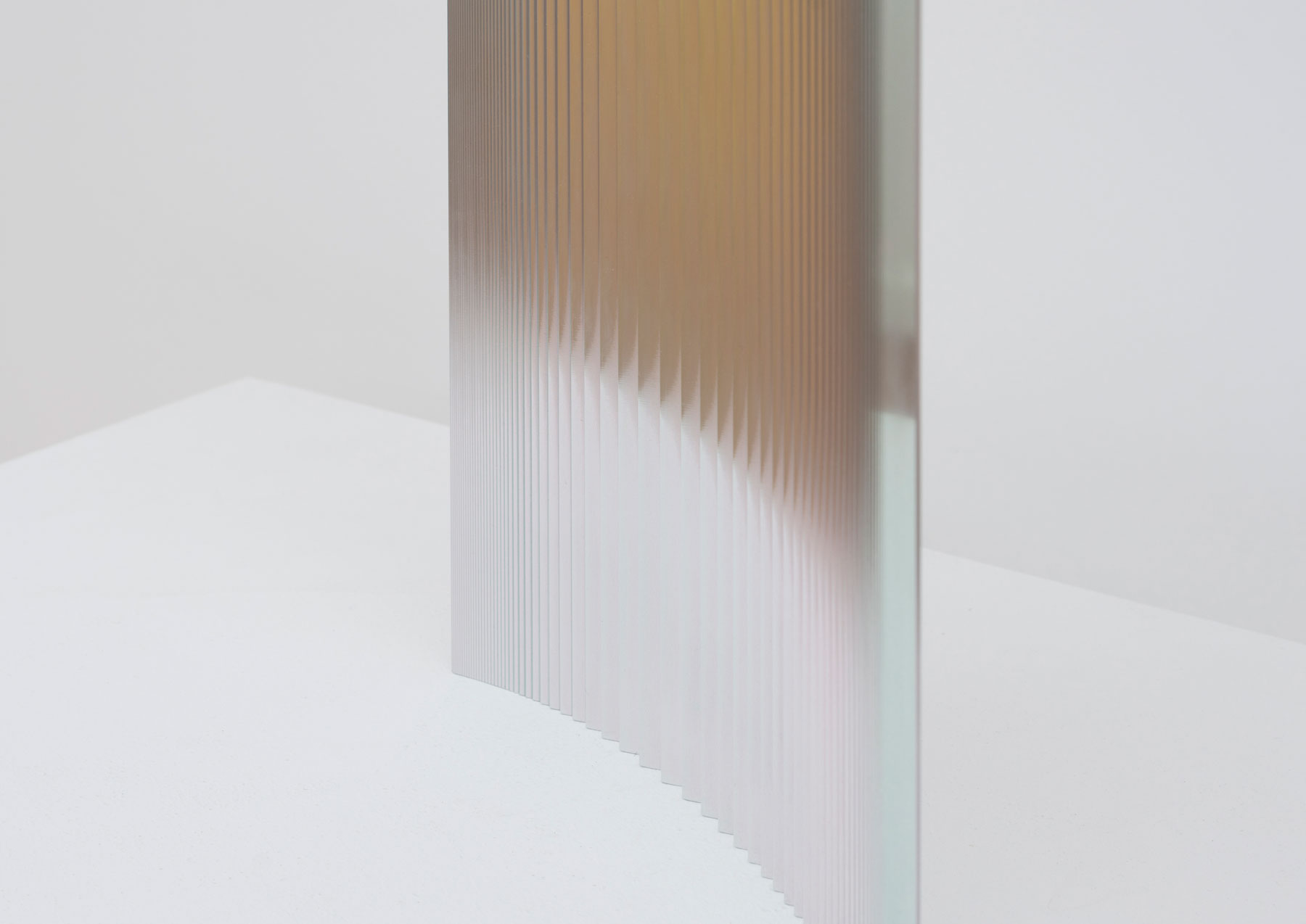
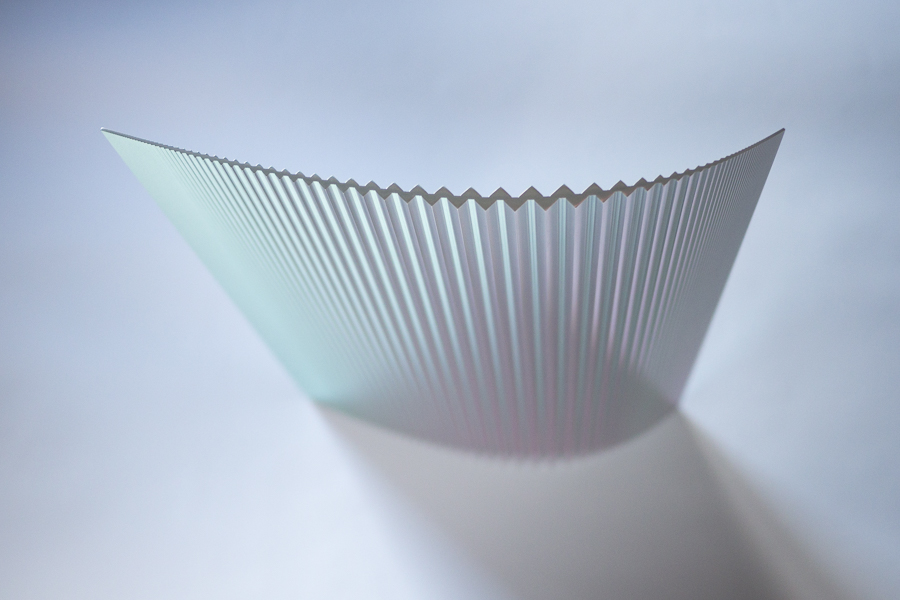
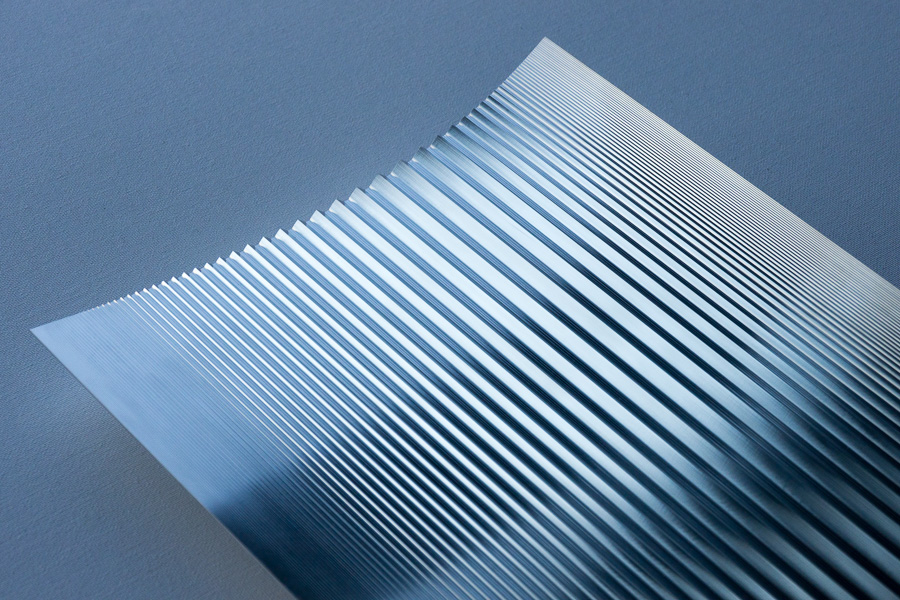
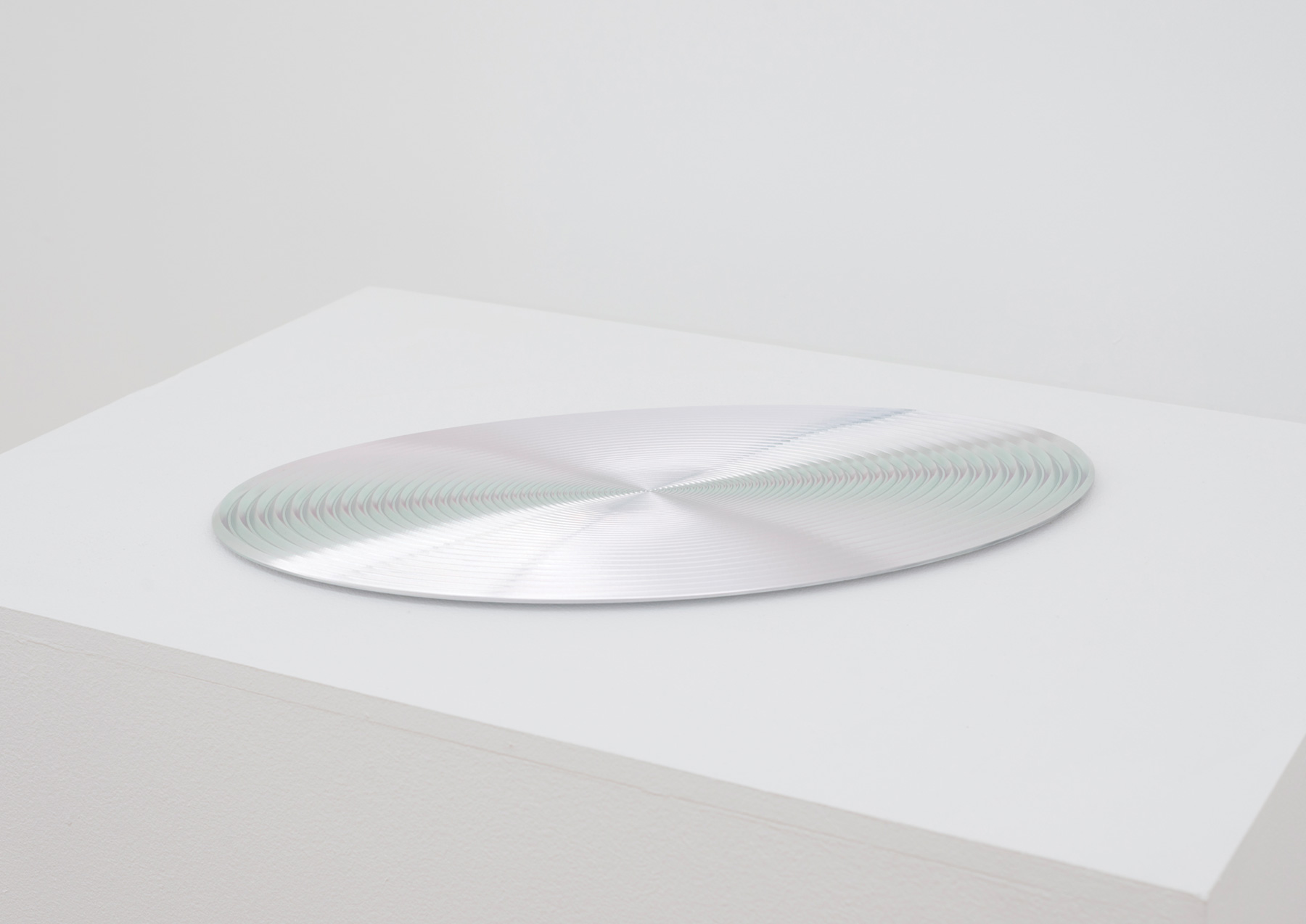
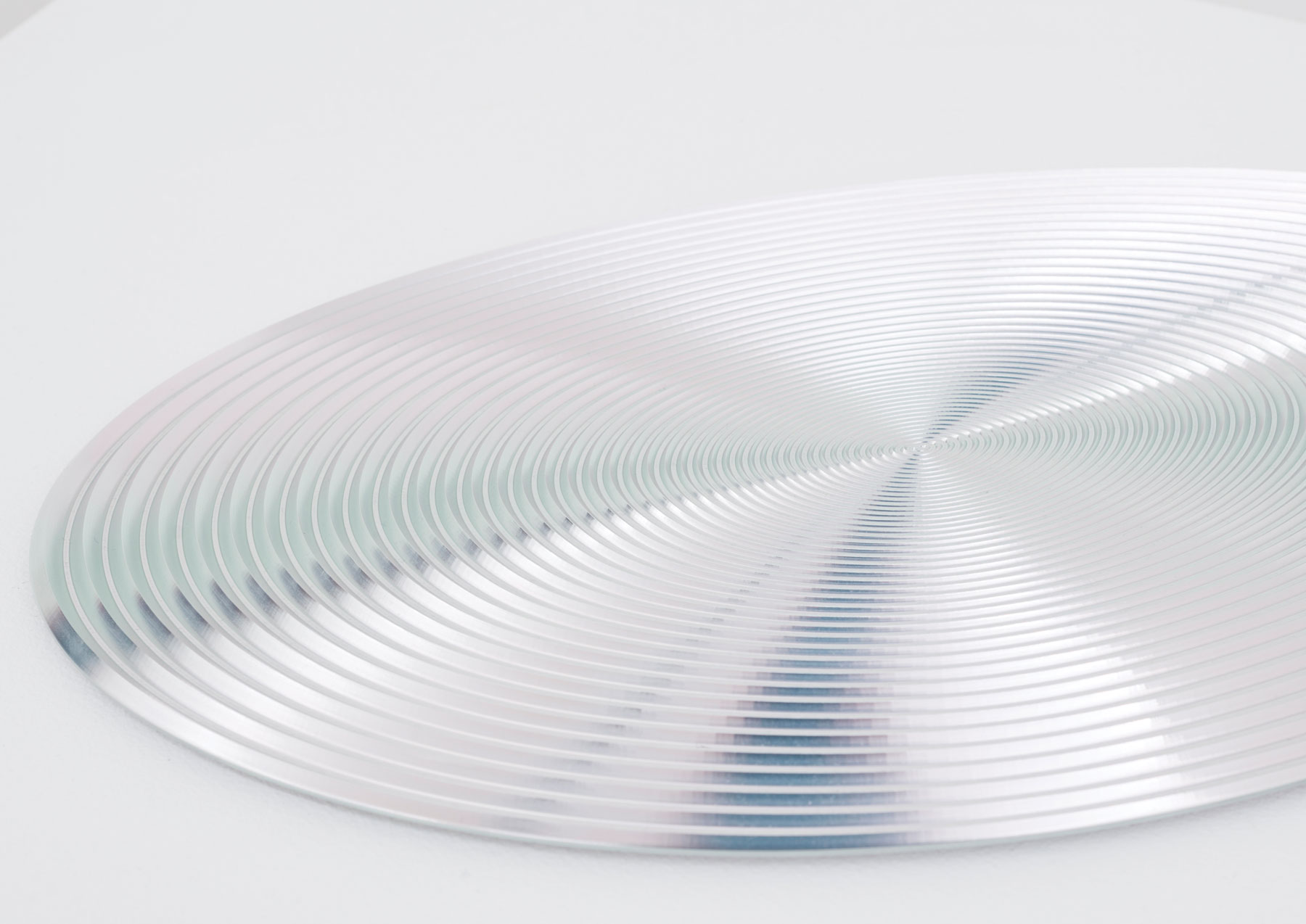
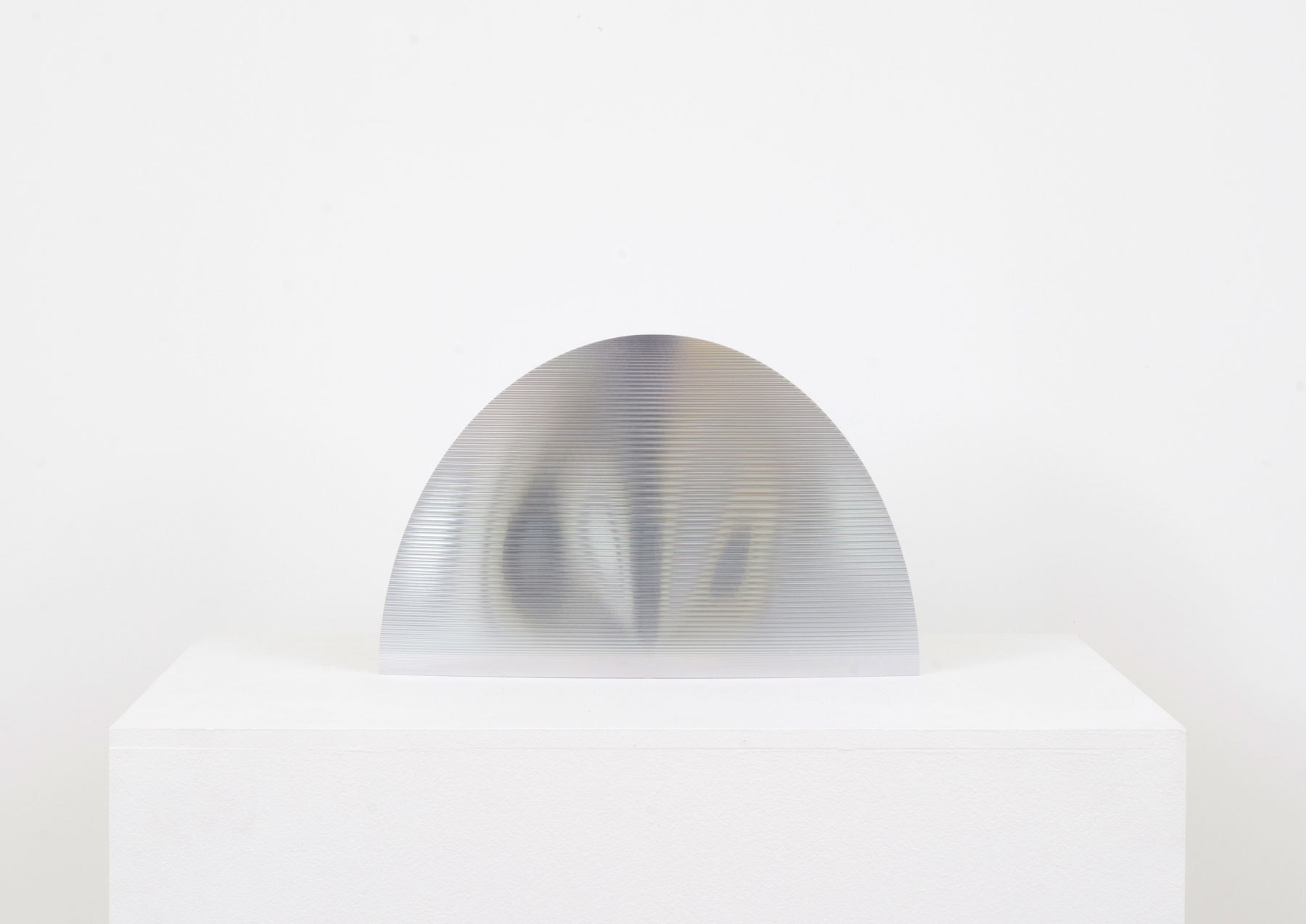




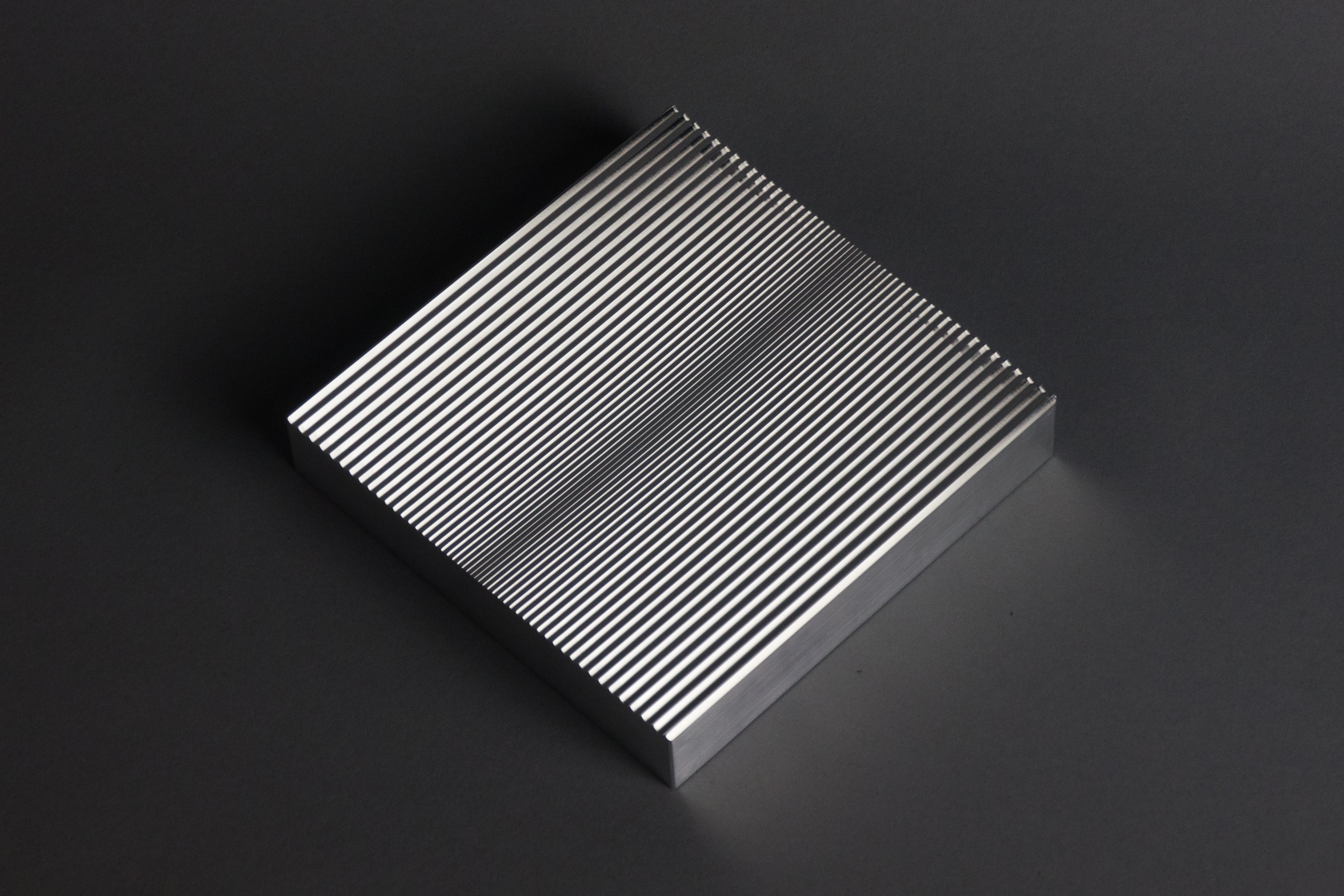
OPTICAL SURFACE STUDIES
How can objects be made to take on and emphasize the ephemeral qualities of the environment and the light around them? Can they, at the same time, offer experiences of sensing one’s own visual perception? Can these small visual disruptions in a space become strong enough to cause people to slow down and ‘sense themselves sensing’ the space? In order to create such visual experiences on an object scale, their perceived effects need to be more concentrated than if they were at the immersive scale of a building. This asks for materials and surfaces that are very responsive to light.
The results of these first tests are objects with surfaces that react to ambient light and their surrounding spaces with different techniques and in different orientations. It’s important not to focus too much on the object itself, but rather on the visual and spatial experience that it provides.
OPTICAL SURFACE STUDIES: REFLECTION
The bright reflective nature of the milled aluminum objects allows them to pick up abstracted reflections of the surrounding space, and gives them the ability to shift in appearance as the viewer moves in relation to the surface. The milled facets break up the surface and create three different angles to catch reflections on, enlarging the surface area and preventing it from becoming a continuous mirror. This abstracts the reflected surroundings, causing the effect to be more ephemeral and less predictable.